
We will have to wait until the February auctions of contemporary art to gauge the extent to which the recession is taking its toll on what has for the last 10 years been the mainstay of the international art market. Meanwhile, elsewhere one might be forgiven for blaming the credit crunch for one or two significant recent events in the antiques trade. However, not everything is as it seems.
This week it was announced that leading London period furniture dealers Mallett are quitting their Bond Street premises to seek out more appropriate showrooms in Mayfair. Meanwhile, another stalwart English period furniture dealer, Norman Adams Ltd., has announced the imminent closure of its Knightsbridge galleries adjacent to Harrods. The Norman Adams stock will be offered for sale at Sotheby’s in April.
If reported on the same page of a newspaper, these two headline developments would seem to offer grim proof that even the most illustrious antiques dealerships are not immune to the economic downturn. In fact, both events are responses to broader underlying changes in the antiques trade over recent years.
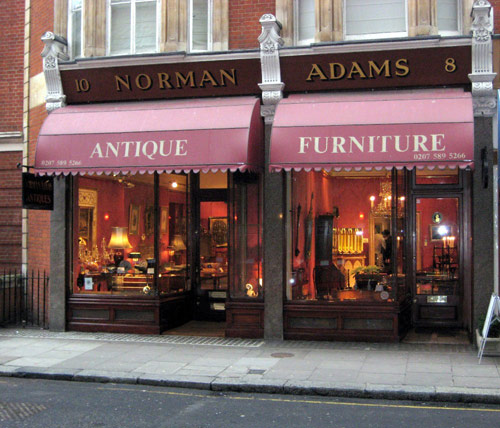
Norman Adams Ltd., which has for decades benefited from the prestigious brand magnetism of its retail neighbor, Harrods, is certainly feeling the recessionary pinch. Its Hans Road galleries, opposite the great department store, have become a significant drain on the company’s resources at a time when the market for period furniture has contracted dramatically. The cost of the premises is among the “vast overheads” that managing director Stewart Whittington is seeking to erase by closing the business down for a few years.
“This isn’t directly to do with the recession,” Whittington told Auction Central News. “That has certainly been a factor, but like a lot of dealers we’ve been pretty well limping along for the last six or seven years. We’re out of fashion, really. The recession was the final nail in the coffin.”
Whittington will put the Norman Adams business into hibernation at the end of January before selling the existing stock at Sotheby’s New Bond Street rooms on April 21 in a sale entitled The Norman Adams Legacy 1923-2009. Whittington will retain the name in the hope of reviving the business at some future date. “There is bound to be an upturn at some point, although I have no idea when. We will start again, from the bottom if necessary. There are bound to be bargains available.”
Meanwhile, Mallett, which describes itself as “the largest and most exclusive antiques business in the world,” is also cutting its overheads through a change of premises. A significant rent hike on its Bond Street galleries in mid-2008 was one of the main reasons for the recent decision to move to Mayfair, said Mallett’s chief executive Giles Hutchinson-Smith. “This move has nothing to do with the recession,” Hutchinson-Smith told Auction Central News. “It is to do with a change in the market for period furniture over the last 10 years.”
When Mallett moved into Bond Street in 1991, their period furniture business was still largely retail in nature. But that trading environment has since changed. “People don’t buy in the way they used to,” said Hutchinson-Smith. “Back in 1991 people from all over the world would come and stay at local hotels and visit us to shop for furniture. Since then Bond Street has been invaded by fashion companies, mostly not very good ones, who require amazing flagship buildings to promote and reinforce their brands. It’s a different approach to business.” The result is a consumer demographic at odds with Mallett’s traditional client profile, prompting the firm into seeking a more appropriate space in Mayfair.
“We need a distinctive building with a fabulous room to show off fine furniture,” said Hutchinson-Smith. “We already have a fantastic window on Madison Avenue, perhaps the biggest and richest collecting village in the world, so our London requirements are relatively modest. The recession is bound to affect us, but we’ve had a very large number of enquiries and some very good sales in the last three months as people look for value and some real tangibility to their assets. We’re very excited about the future.”


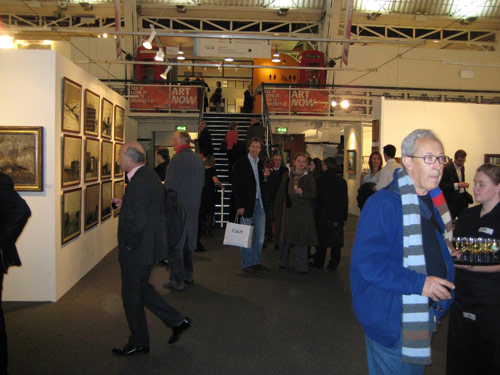
Excitement was also in the air at the opening night of the 2009 London Art Fair at the Business Design Centre in Islington on Jan. 13, albeit perhaps fuelled more by free wine rather than genuine optimism. “This will be our third recession,” quipped John Austin of established London dealers Austin Desmond, a sardonic glint in his eye. He was keeping an open mind on how the week might go, but, like many we spoke to, was stoically prepared for the possibility that the whole affair could turn out to be a damp squib.
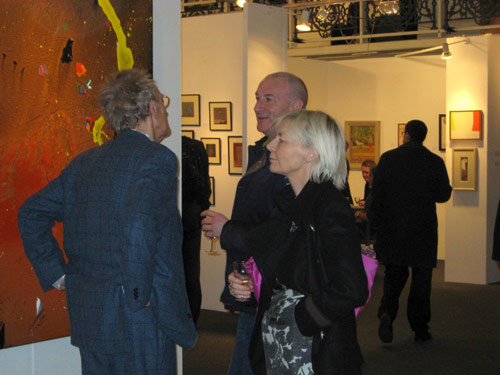
The opening night certainly had a buzz, indeed the sort of buzz that the Olympia Antiques Fair would die for. Scottish art dealer Ewan Mundy was remarkably upbeat, having already sold a few paintings on opening night. “We’re genuinely very optimistic,” said Mundy, who was offering works recently acquired from the estate of collector William Bowie, including some good Scottish Colourist pictures, one or two of which had already either sold or been reserved. “It could turn out to be OK. Especially if they all come back and pay for them.”
Up on the mezzanine level people were flocking through the numerous galleries now specializing in so-called urban art, the much-hyped stenciled graffiti-style pioneered by Banksy and which every aspiring young artist now seems bent on emulating. There was huge interest in a limited edition print series by “the bowler-hatted vandal” Nick Walker on the stand of Black Rat Press of Shoreditch, East London.
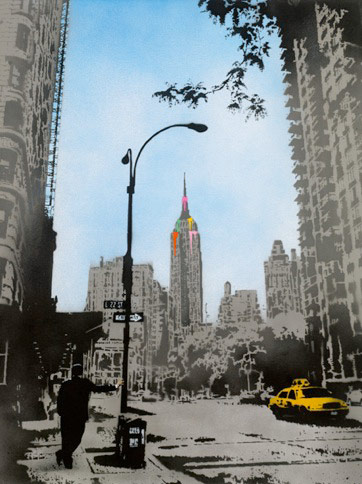
Walker has enjoyed enormous success over the past 12 months. Judging by the crowds queuing yesterday to buy one of his Empire State prints, 2009 looks to be another positive year, global recession notwithstanding.
Leon Martyn from Black Rat Press told Auction Central News that keen punters were queuing outside the fair from 8 o’clock in the morning in the hope of securing one of the Empire State prints, issued in an edition of 175 and retailing at £475 ($692) each. “We sent a taster e-mail around a few weeks ago alerting our clients to the fact that this print would be issued at the fair,” said Martyn. “We wanted to liven things up a bit, bring some vigour to the fair. It’s the first time we’ve done the London Art Fair and the response was phenomenal. The attention generated by the print promotion was also something the fair organizers had never experienced before. This just demonstrates that it’s not all recessionary doom and gloom. There are people out there willing to part with their money.”
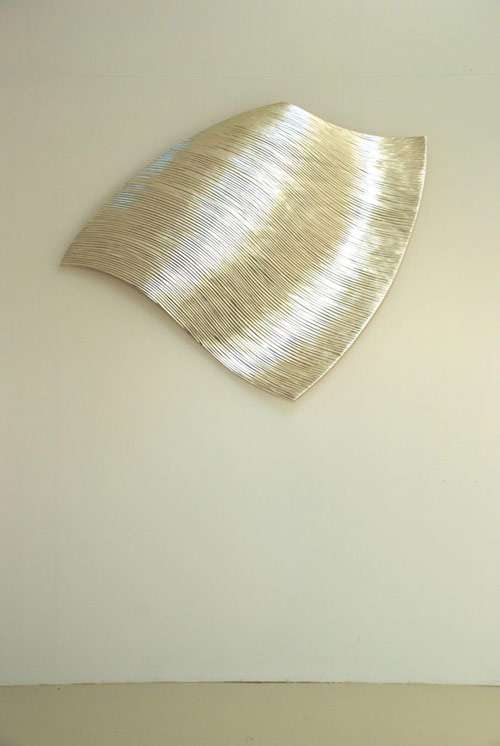
Joseph Clarke of Newlyn and St. Ives-based galleries Goldfish/Millennium, was showing work by, among others, British sculptors Tim Shaw and Simon Allen. Allen’s striking wall-based sculptures constructed from carved wood finished with painstaking craftsmanship in gold and white gold leaf, were wowing visitors to the stand. “I bought an example his work a few years ago,” said one collector, peering at one of Allen’s rippling wave-like forms. “I never tire of it.” Was he ready to buy this one too? “I’m sorely tempted,” he said.
Opening nights are never the best way to gauge whether a fair will succeed. Most of the visitors are there for the buzz, happy to window-shop while slugging on a complimentary plastic beaker of caustic Merlot. The clearest sign of whether the London Art Fair has withstood the early winds of recession will come next week when the fair ends and the exhibitors reveal what business they’ve done. For now, the mantra seems to be: If you’ve got something of real quality, reasonably priced, it has as good a chance of selling now as it did six months ago.
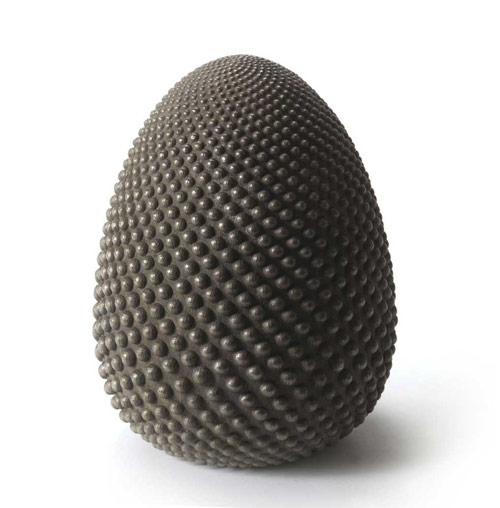
If I’d had £10,000 ($14,567) what would I have spent it on? Answer: a lovely small edition in bronze of Peter Randall-Page’s Seed, familiar to visitors to Cornwall’s Eden Project where the full-size version in granite is permanently located. Price at the fair? A very reasonable £7,500 ($10,925).
Tom Flynn is a London-based writer and journalist. His monograph on British sculptor Sean Henry has just been published by Scala.


